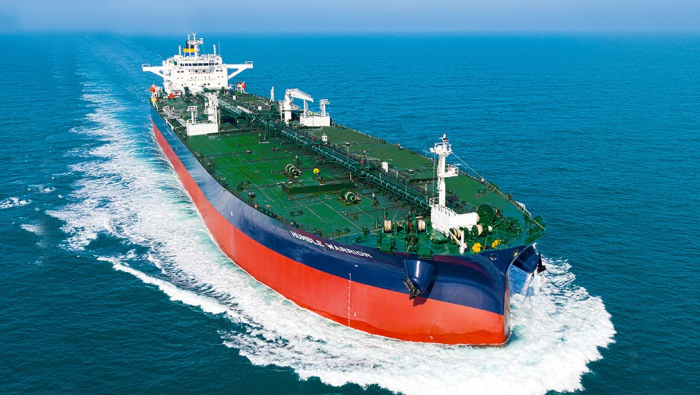Shipping & Shipbuilding
Korean shipyards to beat Chinese rivals with green tankers
Demand for tankers powered by eco-friendly fuel is expected to grow given aging vessels, tougher regulations
By Nov 07, 2023 (Gmt+09:00)
2
Min read
Most Read
LG Chem to sell water filter business to Glenwood PE for $692 million


Kyobo Life poised to buy Japan’s SBI Group-owned savings bank


KT&G eyes overseas M&A after rejecting activist fund's offer


StockX in merger talks with Naver’s online reseller Kream


Mirae Asset to be named Korea Post’s core real estate fund operator



South Korean dockyards aim to expand their presence in the global tanker market dominated by Chinese players with vessels designed to transport or store liquids such as oil and chemicals powered by eco-friendly fuels amid the expected downturn in the world’s shipbuilding industry.
Hyundai Samho Heavy Industries Co., an affiliate of HD Korea Shipbuilding & Offshore Engineering Co., is expected to win an order to build two Suezmax tankers with a capacity of some 150,000 deadweight tonnage (DWT) each from a European customer, according to a global shipping market news provider TradeWinds.
Those vessels to be delivered in 2026 have the option to use methanol as fuel, which would be the first case for a Suezmax tanker to be powered by an eco-friendly combustible.
Those ships were priced at $85.5 million each, higher than an average price of $85 million for new vessels with similar specifications. Hyundai Samho is predicted to earn millions of dollars more if the buyer exercises additional options.
TO BEAT CHINESE RIVALS
Chinese shipbuilders have been sweeping orders for tankers so far this year, offering the vessels at 15-20% lower prices than those for South Korean ships.
Shipyards on the mainland have won contracts to build 98 large tankers in the first 10 months, while their competitors in Korea have inked deals for only 22 vessels, according to global industry tracker Clarksons Research. South Korean shipbuilders focused more on vessels with greater profits such as liquefied natural gas (LNG) carriers.
Prices of tankers are around only a third of LNG carriers. But it usually takes only a year or one and a half years to build them, less time than other ships, while they allow shipbuilders to more efficiently operate their docks given their smaller size, industry sources said.
Demand for new tankers is expected to grow from next year as the average age of existing tankers is 12 years. Tougher regulations on carbon emissions are also likely to boost demand for tankers run with eco-friendly fuel.
South Korean shipbuilders are predicted to seek tanker deals to fill their order books for the coming years amid growing views that prices and orders for LNG carriers may have peaked. Orders for new ships already shrank to 1,324 vessels in the first 10 months of the year from 2,337 ships and 2,068 vessels in the same period of 2022 and 2021, respectively, according to Clarksons Research.
Local shipyards also aimed to win more orders to build carriers for other gases rather than LNG. Hyundai Samho has recently signed a letter of intent with a Danish company to manufacture 10 very large ammonia carriers at $1.1 billion, which would mark the largest ever deal for such vessels, according to foreign media reports.
Write to Hyung-Kyu Kim at khk@hankyung.com
Jongwoo Cheon edited this article.
More to Read
-
 Shipping & ShipbuildingS.Korea’s HMM expands bulk carrier fleet for stable profit
Shipping & ShipbuildingS.Korea’s HMM expands bulk carrier fleet for stable profitNov 02, 2023 (Gmt+09:00)
2 Min read
Comment 0
LOG IN


